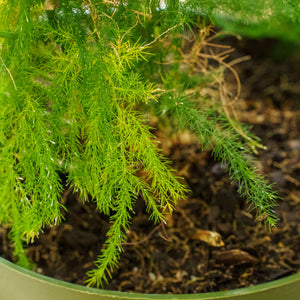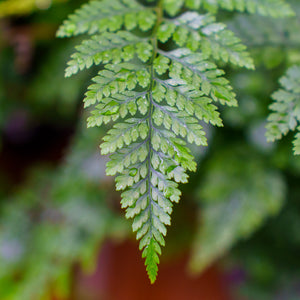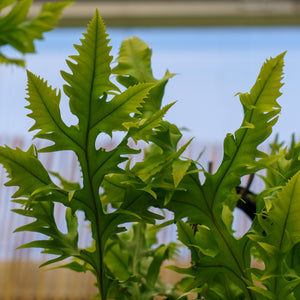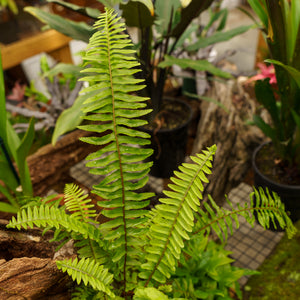The Fern Guide
Ferns are among the oldest and most adaptable groups of plants on Earth. Known for their intricate, lace-like fronds and an ancient, almost primordial beauty, ferns bring elegant greenery to both indoor and outdoor gardens. They do not flower or produce seeds—instead, they reproduce via spores—and they thrive in a wide range of climates, with some species preferring lush, shaded woodlands while others adapt well to dry or tropical environments.
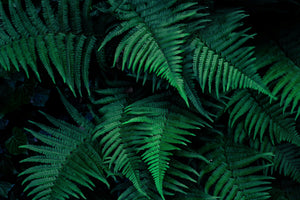
About
Ferns belong to the Pteridophyta division and include more than 10,000 species worldwide. They are prized for their ability to add texture and softness to gardens, forests, and interior spaces alike. Ferns grow in various forms, from low groundcovers to tree-like structures, making them incredibly versatile in both size and use.
In garden settings, popular species include Nephrolepis exaltata (Boston fern), Adiantum raddianum (maidenhair fern), Cyathea cooperi (Australian tree fern), and Dicksonia antarctica (Tasmanian tree fern). Houseplant favorites include Asplenium nidus 'Crispy Wave', Platycerium bifurcatum (staghorn fern), Microsorum musifolium 'Crocodyllus' (crocodile fern), Hemionitis arifolia (heart fern), and Phlebodium aureum (blue star fern). The Asparagus densiflorus group, while not true ferns, mimic fern-like foliage and are often included in fern collections.
Notably, Asparagus plumosus and Asparagus retrofractus (also known as asparagus fern) are popular ornamental plants but are not true ferns and can be toxic to pets. True ferns like Nephrolepis exaltata are generally considered non-toxic.
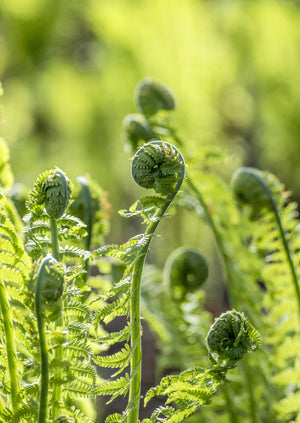
PLANTING
Ferns thrive in a variety of environments, depending on the species, but they typically favor shaded, moisture-retentive locations:
- USDA Hardiness Zones: Varies widely by species. Boston ferns and maidenhair ferns are hardy in Zones 9–11, while hardy outdoor species like ostrich fern (Matteuccia struthiopteris) can survive in Zones 3–8.
- Soil: Rich, well-draining soil with consistent moisture. A mix of compost, peat, and pine bark works well for container ferns.
- Sunlight: Most ferns prefer partial to full shade. Some indoor ferns can tolerate indirect or filtered light.
- Watering: Keep soil consistently moist but never soggy. Ferns dislike drying out completely.
- Planting Time: Best planted in spring or early fall. For houseplants, transplant any time during active growth.
Use mulch around outdoor ferns to retain moisture and protect the root zone, especially during the heat of summer.
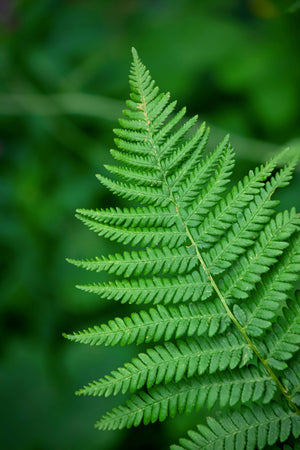
CARE
Ferns require regular moisture and humidity but are otherwise undemanding. Here’s how to keep them thriving:
- Watering: Water when the top inch of soil feels dry. Most ferns prefer high humidity, especially indoors—mist regularly or use a pebble tray.
- Fertilizing: Feed monthly during the growing season with a diluted balanced liquid fertilizer. Avoid overfeeding, which can cause browning.
- Pruning: Trim dead or yellowing fronds at the base. This encourages fresh new growth and improves appearance.
- Repotting: Indoor ferns benefit from repotting every 1–2 years into fresh soil. Divide overcrowded clumps when necessary.
- Winter Care: Hardy outdoor ferns may go dormant and die back in winter. Leave fronds to protect the crown, then trim in early spring.
- Pests & Diseases: Indoor ferns may attract scale, mealybugs, or spider mites if humidity is low. Treat with insecticidal soap or neem oil.
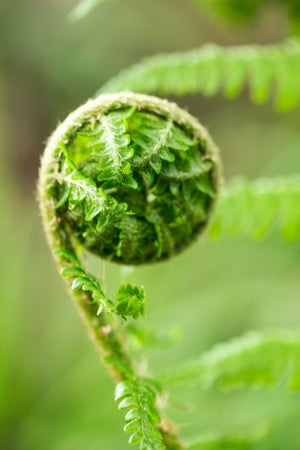
HOW TO USE
Ferns excel in a wide range of garden designs and interior plantings thanks to their soft texture and adaptability:
- Shade Gardens: Pair with hosta, astilbe, epimedium, and brunnera for a layered woodland look.
- Woodland Borders: Use hardy ferns like Dryopteris and Osmunda in naturalistic plantings.
- Containers & Hanging Baskets: Boston fern (Nephrolepis exaltata) and asparagus ferns are stunning in hanging displays.
- Indoor Decor: Use staghorn, bird’s nest, and maidenhair ferns in bright bathrooms or humid rooms with indirect light.
- Groundcover: Use spreading types like Pteris cretica in shady beds or around trees.
Ferns complement textural companions like caladium, heuchera, or carex grass in outdoor beds or tropical arrangements.
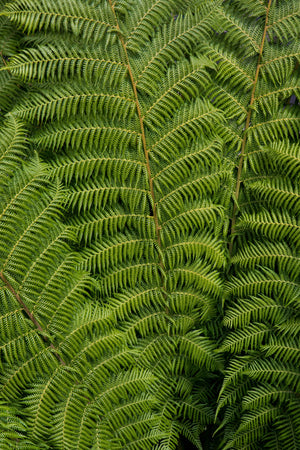
COMMON QUESTIONS
- Are ferns toxic to cats? True ferns such as Boston fern (Nephrolepis exaltata) are non-toxic. However, asparagus ferns are toxic.
- Are ferns toxic to dogs? As with cats, true ferns are safe, but asparagus ferns can cause vomiting or abdominal discomfort in dogs.
- How to care for ferns? Provide consistent moisture, filtered light, and high humidity. Trim dead fronds and repot as needed.
- What is a fern? Ferns are non-flowering vascular plants that reproduce via spores and have been on Earth for over 300 million years.
- Are ferns perennials? Yes, most ferns are perennials, returning each year in the right conditions.
- What are the different types of ferns? Tree ferns, maidenhair ferns, sword ferns, bird’s nest ferns, staghorn ferns, and many more, both hardy and tropical.
- How often to water ferns? Water when the top inch of soil is dry. Indoor ferns may need water 1–2 times per week; outdoor ferns depend on weather.
- Do deer eat ferns? Most ferns are deer resistant, especially those with tough or leathery foliage.
- How to care for Boston ferns? Keep in bright, indirect light with consistent moisture and high humidity. Trim dead fronds and avoid drafts.
- How to look after a fern? Maintain even moisture, avoid direct sun, mist regularly, and prune old fronds to keep plants healthy.
- How to propagate ferns? Propagate by division or, for advanced gardeners, via spores. Most ferns divide easily in spring.
- Do ferns need sun? Most prefer shade or filtered light. A few tolerate morning sun, but avoid harsh afternoon exposure.
Conclusion
Ferns add timeless grace and lush greenery to both indoor and outdoor spaces. With a huge variety of textures, sizes, and forms—ranging from delicate maidenhairs to towering tree ferns—they offer something for every gardener. Whether you’re brightening a shady corner or curating a tropical interior, ferns provide calming foliage, low-maintenance beauty, and a connection to the ancient natural world.
The Fern Collection
Sold Out
Sold Out
Sold Out
Sold Out

